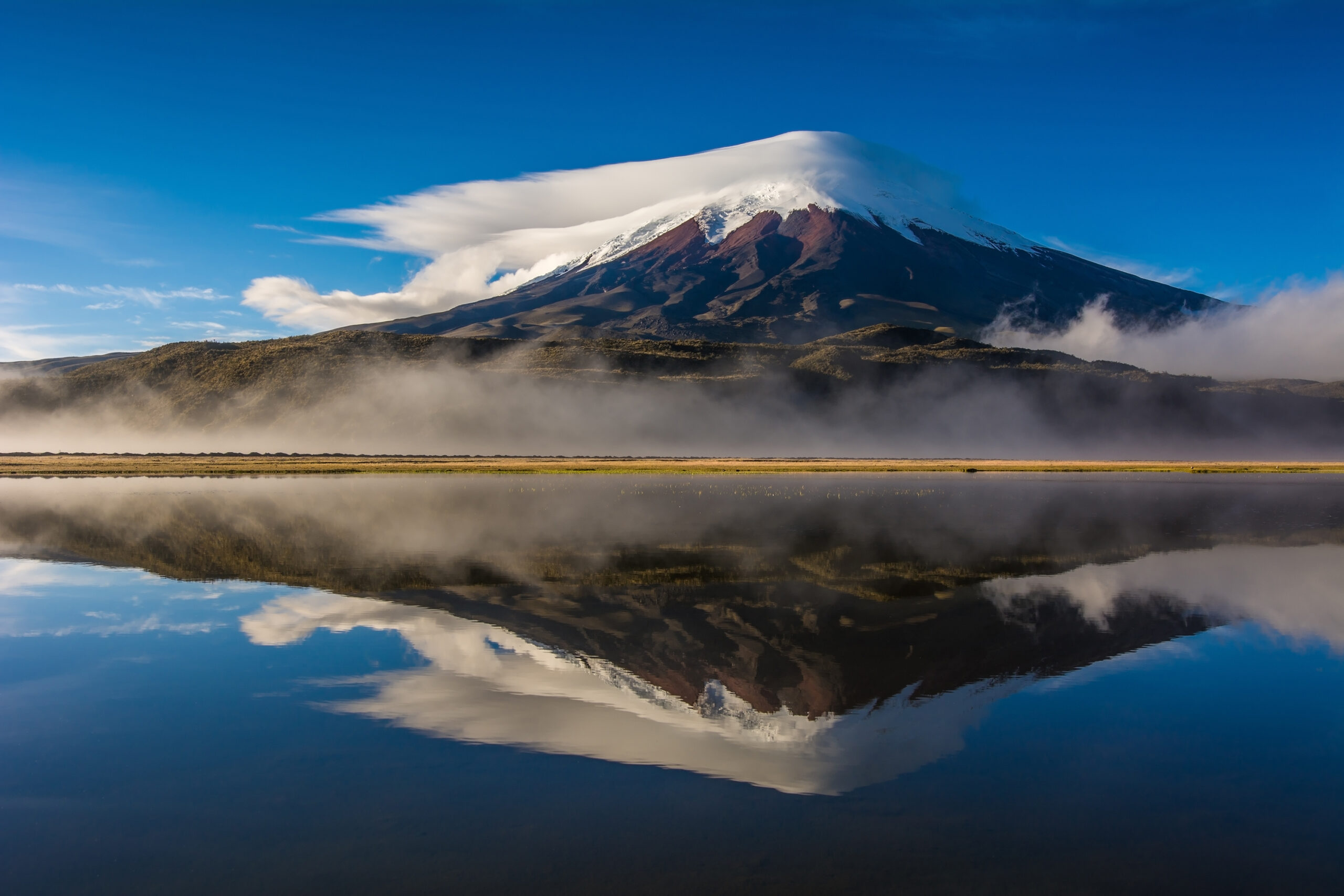South America Countryside
The ghosts and grandeur of Quito, Ecuador

Craig Tansley discovers the luxurious side of the haunted haciendas in the mountains outside Ecuador’s dramatic capital.
The ghosts are so restless in these parts that the eyes on the faces of the paintings and on the old black-and-white photographs in the historic dining halls follow me as I walk round each room. At breakfast, as I look outside across manicured gardens to paddocks where horses feed, silent, smiling butlers in pristine suits serve me hot tea and toast. Sometimes I’m not sure if they’re even real themselves; they look trapped in a different era. But then, centuries of Spanish colonists in the haciendas that surround Ecuador’s most-famed city, Quito, have left generations of spirits. In one hacienda, I even sleep in the bedroom that was once used by the most famous South American of them all, Simon Bolivar, who liberated Ecuador from the Spanish.
Though, truth be told, ghosts are really just a small part of what makes this place seem so otherworldly. Up here, at these lofty altitudes, wispy clouds drift right through you as you go about your day. When they lift and the sun shines with a force you can only feel this high above sea level, huge, white snow-covered mountains in the sky reveal themselves, then disappear just as quickly amongst the mist.
But most travellers will miss all this in their haste to visit Ecuador’s most famous attraction, the Galapagos. What they’ll miss provides the best insight into life as it has been in the centuries since the Spanish first conquered Ecuador. You’ll feel the homesick pangs of Spaniards here in these grand haciendas, trying desperately to replicate the grandeur of life back home in Europe.
That all these luxurious haciendas can be accessed along one of the most scenically spectacular strips of mountains anywhere outside the Himalayas comes as quite a surprise to travellers. Dubbed the ‘Avenue of the Volcanoes’, there are nine mountains more than 5000 metres high along a 300 kilometre strip between the eastern and western cordilleras of the Andes. And just north of here too, Ecuadorians live much as they always have in tiny villages sprinkled in amongst the Andes’ folds.
Though many of those who come here do so to climb these mountains, there’s just as much here for the luxury traveller who’d rather sip wine with a view than risk life and limb getting to the top. There are culinary and cultural pleasures all across this lofted region. Just off the main highway, I find towns in the valleys of mighty snow-clad peaks where the streets are still cobbled and old ladies carry sacks of produce on their heads, while the men sell fruit and vegetables from carts. Here, shrines to Jesus take pride of place and old men gather on benches in town squares in suits to read the newspaper, fedoras blocking their faces from the sun.
Around here, locals worship the volcanoes that dominate their landscape. Rather than fear these mountains (and one, Cotopaxi, the world’s tallest active volcano, began erupting last year after 75 years of slumber), locals harness the energy they believe these ancient peaks possess.
On a hillside overlooking a dormant volcano and the town of Otavalo, I stay in wellness and yoga retreat My SachaJi, whose name means ‘Beloved Mountain’ in the local dialect. In the evening I sit beside a fire pit watching the sun set over the mountains and the volcanic lake, San Pablo. The retreat was designed in consultation with a feng shui expert to ensure every room channels the energy of the extinct volcanoes that surround it.
Just south of here, I bathe in volcanically heated waters in a hidden valley of the Andes at Papallacta Hot Springs. Among mist rising from the naturally heated waters, I can see the 5897 metre Cotopaxi above the clouds, its snowy upper ridge shiny and smooth like the top of a meringue. The hot springs also contain the best day spa in the region.
One day I venture into Cotopaxi National Park, where hawks and condors circle above me. Cotopaxi surges out from a flat plateau, and a constant stream of white-grey gas rises from its peak. Up here I walk around volcanic lakes, dodging mud flows and gigantic stones from eruptions centuries before. Another day I take a horse ride through the cloud forest just below the mountains, riding horses dubbed criollos parametros – they’re tiny but sturdy mounts that have adapted to the tough conditions of the volcanic plateaus. We ride between haciendas, among deer and wild horses and Chuquiragua (mountaineer’s flower).
Yet, despite the spectacular nature of the surrounding landscape, it’s the luxuries of hacienda life that shine through in these mountains outside Quito. Meals are served by waiters in tailored suits in the four-centuries-old grandiosity of haciendas such as La Cienega – built in 1580 next to courtyards where gigantic Catholic crosses were erected beside exquisitely manicured rose gardens and private chapels. At Le Cienega, you can stay in the stately suite of the German naturalist, Baron Von Humboldt, who coined the phrase ‘Avenue of the Volcanoes’ in 1802. Or at the 16th-Century hotel, Hacienda Zuleta, you can eat organic vegetables from the garden with homemade Ecuadorian cheese made from the milk of hacienda’s own dairy cows, from recipes handed down through generations of Ecuadorian chefs.
And in the evening, after the sun dips and the temperatures drop to a chill, enormous log fires are lit by butlers, bottles of fine Argentinian and Chilean malbecs are downed, and the ghosts of the long-gone conquerors come to share the old-world ambience of a cultured life in some of the highest mountains of South America.
Latest Articles
Don't miss the latest from Luxury Travel
